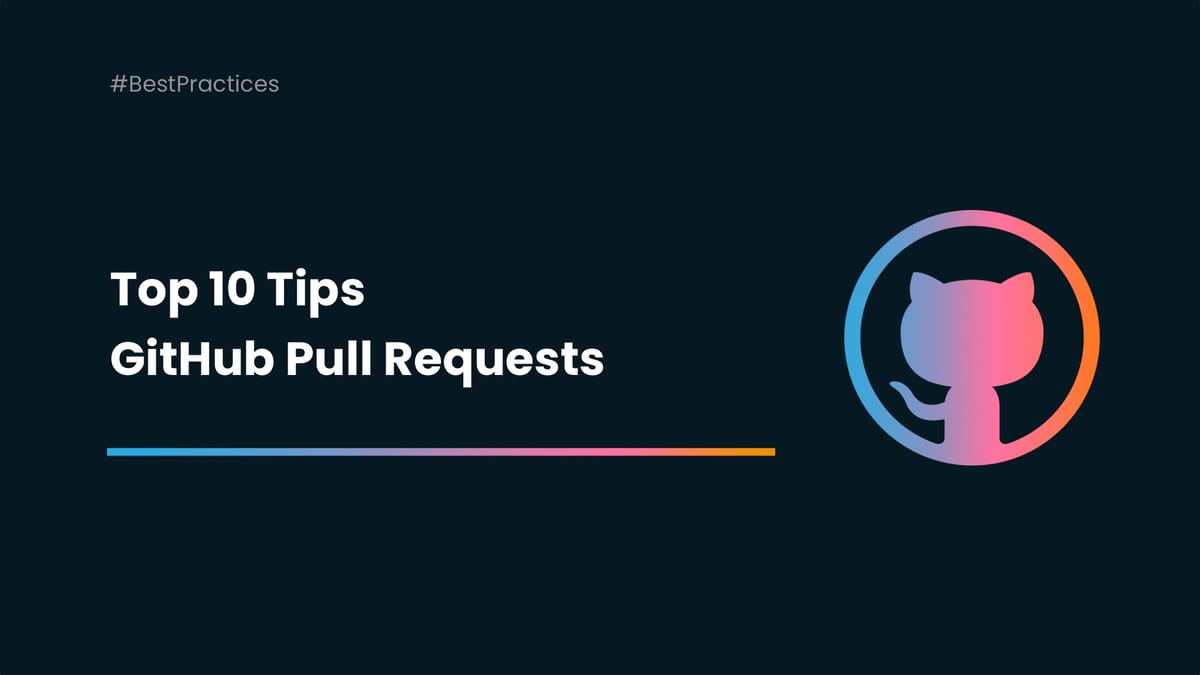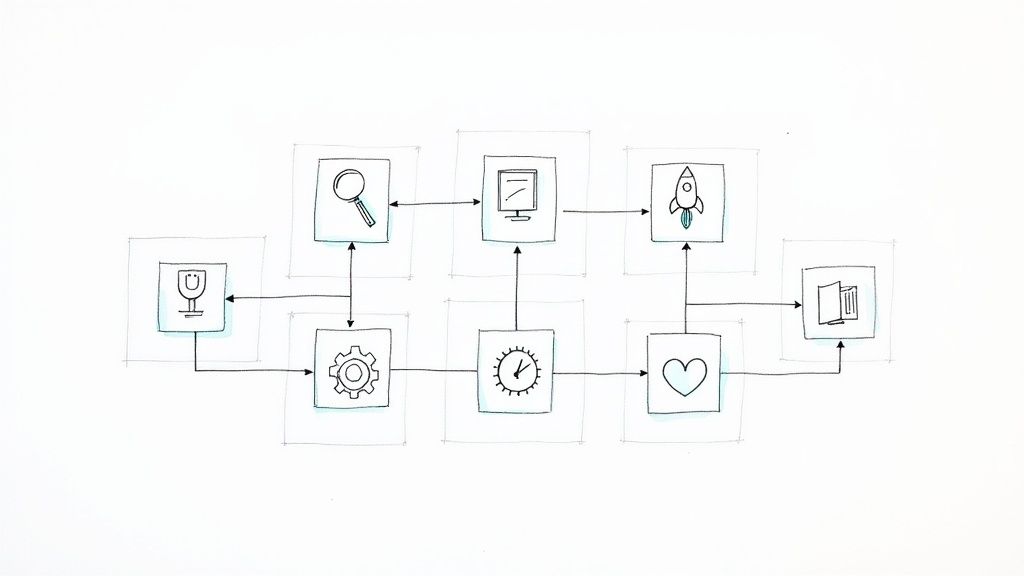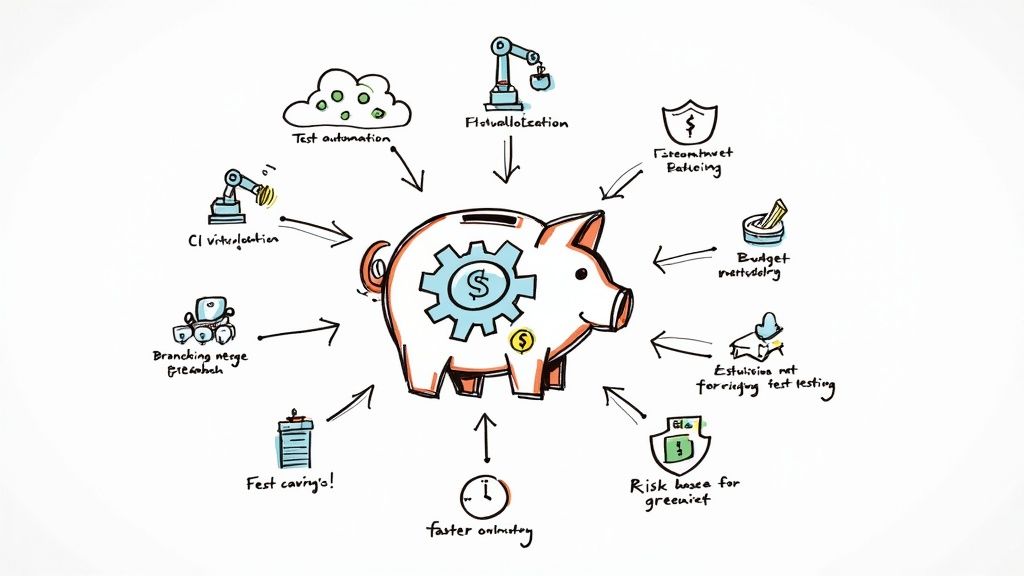GitHub Pull Requests: 10 Tips to Know
Pull requests play a vital role in software development projects on GitHub, as they help accelerate development and retain code integrity. As a result, progress is fast and bugs minimal. But that's only the case if developers and repository maintainers follow GitHub pull request best practices.

GitHub pull requests refer to developers requesting that their code merges with the main repository. When changes or additions are needed, developers create a fork of the repository or — even better — a new branch within the main repository and work on that before merging it with the main code for better version control.
Pull requests play a vital role in software development projects on GitHub, as they help accelerate development and retain code integrity. As a result, progress is fast and bugs minimal. But that's only the case if developers and repository maintainers follow GitHub pull request best practices.

So without further ado, here are 10 tips for using pull requests in the best way:
1. Write a Clear and Concise Description
Every pull request has a title and a description that gives the reviewer some context on the request. The description should articulate what the pull request achieves or resolves without being too wordy.
A clear description will make the code review process seamless and increase the chances of a quick merge. When writing the description for a GitHub pull request, state the problem, the solution, and how you arrived at that solution.
2. Keep Commits Small and Atomic
It’s best to utilize atomic commits (commits that represent the smallest possible change) when working on a branch. This can simplify review, as the reviewer can check the pull request by looking at the commit history and does not necessarily need to review every single line of code.
Moreover, keeping commits small makes it easier to revert the code to the previous state should there be problems.
3. Test Code Before Sending Pull Request
Run tests on the code locally before sending in the pull request. You should catch any bugs before the pull request branch goes for review. It will save you time and prevent bottlenecks in development.
To run tests successfully, you'll need to set up the local environment to match that of the target branch.
4. Use Branch Protection Rules
GitHub is ideal for team collaboration on development projects. While it facilitates collaboration, it could be more secure. To ensure that code quality and security are maintained, it's best to set branch protection rules.
Branch protection rules are configurations that allow repository maintainers to apply security policies. These rules can also enforce other policies, such as code review requirements, status checks, and merge restrictions. You can set rules for specific or all branches.
5. Follow the Coding Standards and Conventions
One of the best practices developers can follow for pull requests is sticking with coding conventions. Every company has specific coding standards that help ensure the code is easy to read, maintain, and edit.
The changes or additions in the pull request should follow the same standards and practices prescribed for the main repository's code. That keeps coding cohesive, reducing confusion for reviewers and other developers.
6. Avoid Merging Pull Requests on Your Own
Don't merge pull requests yourself, even if it covers something trivial. Make sure that you, at the very least, assign the repository administrator to review and merge the pull request. This practice creates accountability.
If your pull request review and merging are taking time, you can contact the reviewer and communicate.
7. Rebase Regularly to Keep Your Branch Up to Date
Rebasing involves moving and combining a series of commits to a new base commit. In other words, rebasing changes the base of the branch one after another commit, which keeps the branch updated as you progress.
Rebasing the branch is particularly helpful when working on a feature branch. Any changes in the main branch are updated to the feature branch while you're still working on it. It helps keep the history linear and clean.
8. Request Feedback and Incorporate Suggestions
Pull requests are all about encouraging collaboration. One of the most beneficial GitHub pull request best practices is assigning more than one reviewer to assess the code. This way, developers can get insights and opinions on their code.
Incorporate any helpful suggestions to improve the code within the same pull request without initiating a new one.
9. Keep Pull Requests Small and Focused
If you want your code reviewed thoroughly and quickly, keep the pull requests small, focusing on one main change or feature. If there is more than one significant change to code, it's best to break it down into smaller pull requests. Small and focused pull requests also ensure higher-quality code.
Big pull requests make code review tedious and time-consuming, which increases the risk of buggy code approval and merging. It also delays the projects, especially if other developers rely on your pull requests to merge.
10. Monitor and Maintain Pull Requests
Monitoring and maintaining a pull request helps developers keep track of the progress and make any further changes swiftly. Don't start a new pull request if you're asked for changes or improvements. Instead, make the commits in the same pull request for better traceability.
Include comments in the code to provide context for changes you make. Take screenshots to document the changes.
🤓 GitHub Pull Request Best Practices Summary
Pull requests on GitHub can make your life as a developer or project manager easy. It helps with continuous code integration while also allowing flexibility and convenience.
Using concise descriptions and correct titles. Keep commits and pull requests small and manageable. Rebase frequently, follow general coding standards in your organization, and most importantly, welcome feedback from leaders and peers.
With the right tools, pull request management can be simplified and optimized. Make GitHub easier with Mergify.





